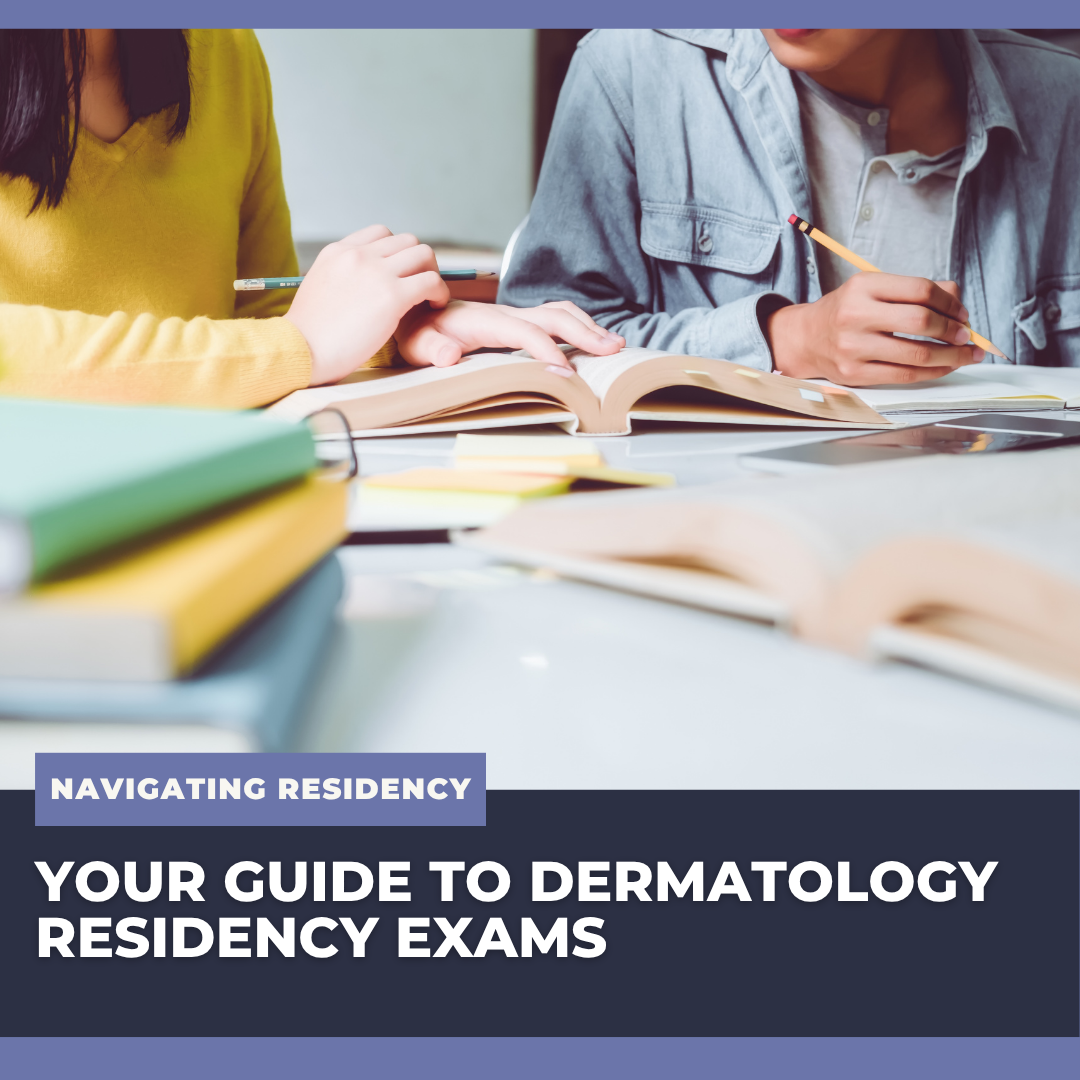It’s July 1st. You’re in orientation, buzzing with excitement (and maybe a little nervous), thrilled to finally begin dermatology residency. But then it hits you: Wait… there are more exams I need to take? What are they, and when do I need to take them?
Welcome to your guide to all the board-related milestones during dermatology residency. Whether you’re a freshly minted PGY-2 or staring down graduation, here’s what you need to know.
The BASIC Exam (PGY-2)
During your first year of dermatology residency, you’ll take the BASIC exam, typically held in the spring. This one-day, computer-based test is administered on the same day for all PGY-2 dermatology residents across the country. It’s not pass/fail, instead, it provides a percentile score comparing your performance to other residents at the same stage.
The exam is designed to assess foundational dermatology knowledge and to help you and your program identify your strengths and knowledge gaps. It’s a helpful diagnostic tool, not something that determines your future, but it can be a great wake-up call or confidence boost depending on how things go.
What to expect: The exam uses a standard multiple-choice format and covers the full spectrum of dermatology. The content is based on the American Board of Dermatology (ABD) Content Outline, and the results are shared only with you and your program.
The CORE Exam Modules (PGY-3 and PGY-4)
Once you enter your second year of dermatology (PGY-3), you become eligible to take the CORE exams which are four separate, case-based assessments that test your clinical knowledge across the major pillars of dermatology:
-
- Medical Dermatology
- Pediatric Dermatology
- Surgical Dermatology
- Dermatopathology
These exams can be taken either at a testing center or remotely via proctoring. Residents typically begin registering during the winter of their PGY-3 year, and you have until the end of PGY-4 to complete all four. Some residents choose to space them out across the year, while others double up on exam days.
What to expect: The dermatopathology module includes interactive virtual slides that you can pan and zoom, so it’s helpful to review digital dermpath sets in advance. The surgical dermatology module may include questions on procedural steps, reconstruction options, and anesthesia. All questions are designed to reflect clinical scenarios and encourage real-world application of knowledge. Each exam is pass/fail, and once you pass a module, you’re done with it for good.
The APPLIED Exam (After Graduation)
After completing residency and passing all four CORE modules, you’ll be eligible to sit for the APPLIED exam, the final step toward becoming a board-certified dermatologist. This exam is typically offered once a year, usually in late summer, and is administered in person at Pearson VUE testing centers.
The APPLIED is a full-day, 8-hour exam that includes 200 multiple-choice questions divided into four sections. The content is distributed approximately as follows:
-
- Medical Dermatology: 55%
- Pediatric Dermatology: 15%
- Surgical Dermatology: 15%
- Dermatopathology: 15%
What to expect: Unlike the CORE exams, the APPLIED exam integrates content from all four areas in a mixed format. You’ll encounter clinical images and histology photomicrographs, but virtual dermpath slides are not included. The exam is designed to assess your ability to apply knowledge in real-world clinical scenarios, everything from diagnosis and management to patient safety.
Signing Up and Staying on Track
You’ll register for all exams through the American Board of Dermatology (ABD), which provides up-to-date timelines, eligibility criteria, and exam resources. Your program coordinator will help keep you on track with registration deadlines and requirements, but it’s a good idea to stay proactive and check the site regularly.
Final Thoughts
Dermatology residency is a time of rapid growth, and the exams you take along the way are there to support that process, not define you. Each step, from the BASIC exam to the APPLIED, builds on the one before it and brings you closer to board certification. Lean on your senior residents, make use of solid study resources, and don’t wait until the last minute to start preparing.
You’ve already made it this far, keep going. You’ve got this!
Did you enjoy this article? Find more on Navigating Residency here.

